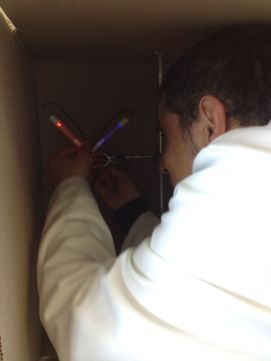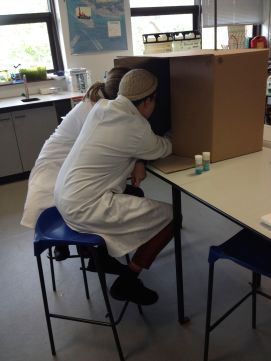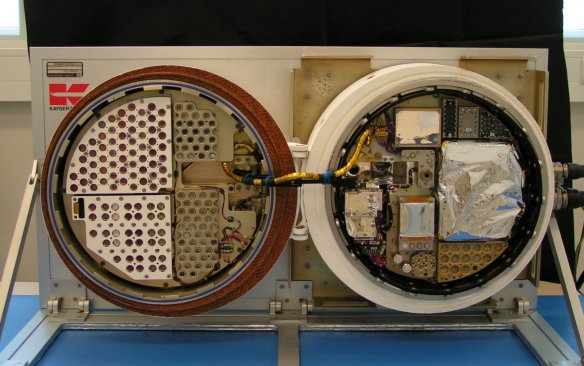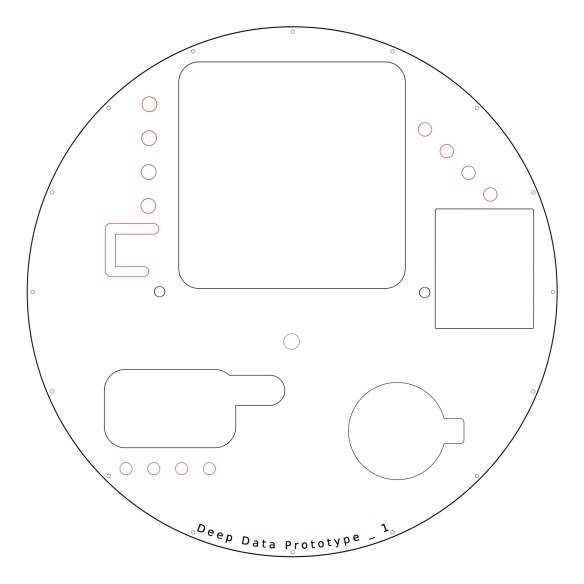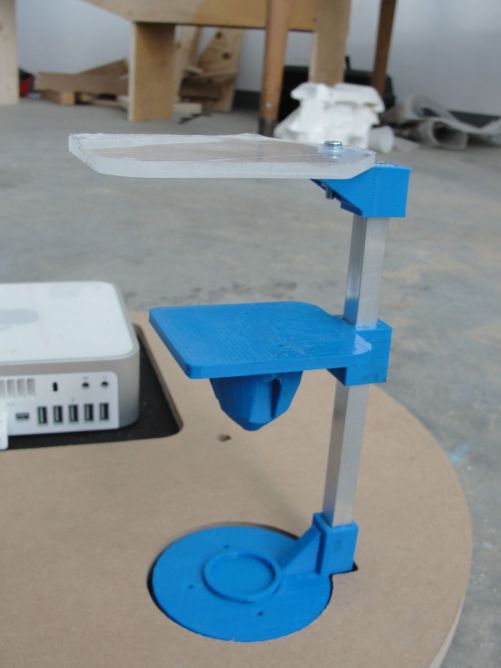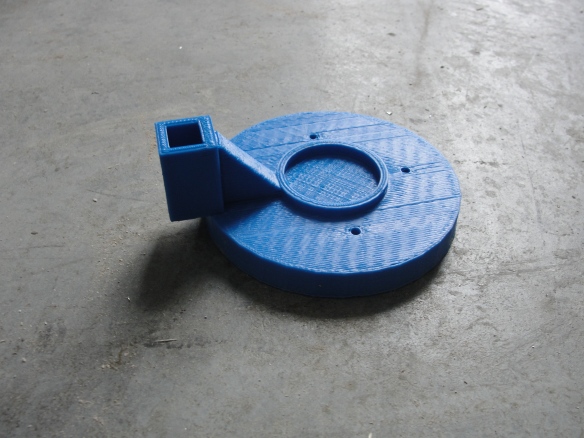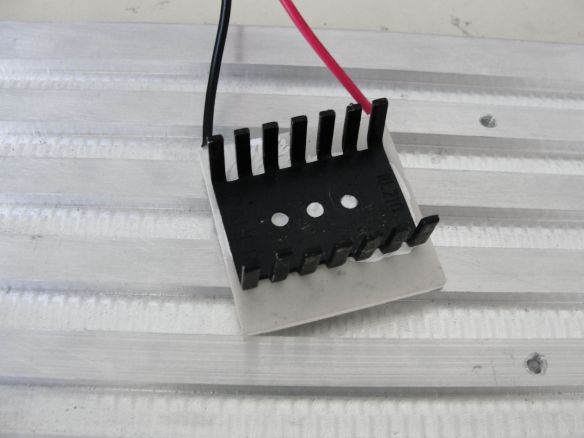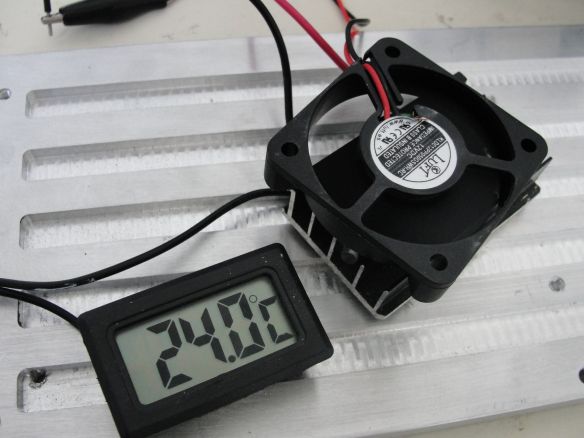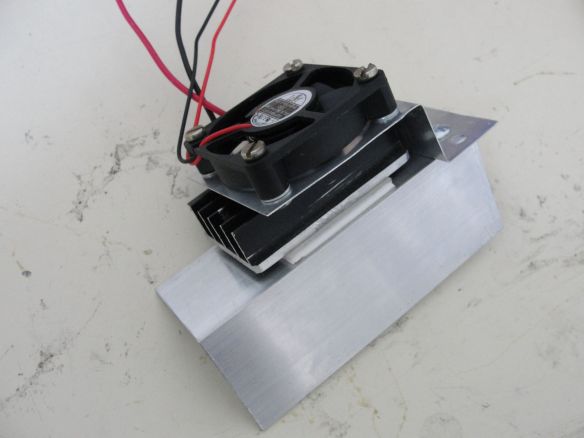From the beginning to the end in one post….
A few months ago I was invited to make a new work for an exhibition called “Sin Origen Sin Semilla” which would take place at UNAM in Mexico City. I decided that this new work would be the long overdue second piece in the Deep Data series, and this work would use the model organism plant Arabidopsis.
Consistent with the Deep Data concept, this work would reproduce or reinterpret space bioscience experiments using the same organism. It appears that arabidopsis has been used extensively for gravitaxis and root development experiments, and despite my future plans to build a random positioning machine, that was not feasible on the short timescale I had to develop and make the piece.
Being a model organism, arabidopsis has numerous documented naturally occurring and genetically manipulated mutants. One of these is the photomorphogenic mutant NW67, which will show variations in the development of the hypocotyl depending on the spectrum of light it receives at the seedling stage.
To cut a long story short, Deep Data Prototype 2 became a piece in which arabidopsis seedlings could be grown under the light conditions, both real and imagined from science fiction, on other planets and moons in the solar system – planets and moons where there has been some discussion of the viability of human bases and/or alien life.
The growth systems for the seeds/seedlings would be heavily indebted to the RootChip developed by Guido Grossman et al, a PDMS device which would allow nutrients to reach the developing root system while allowing full observation of the growth process.
The original 3D visualisation of how the piece would look.
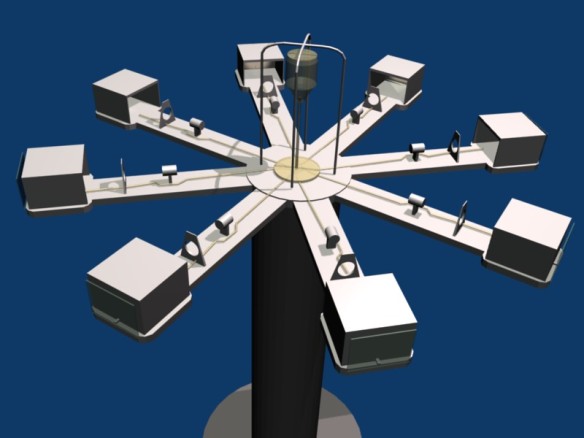
From drawings made in Inkscape and Draft Sight all the wooden pieces for the arms and growing boxes were cut on the laser cutter in the Laboral Fablab.
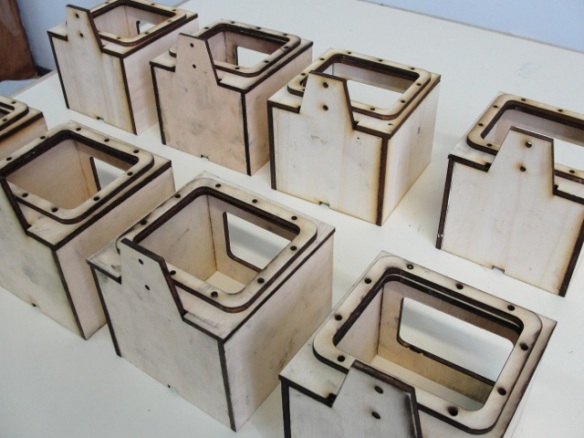
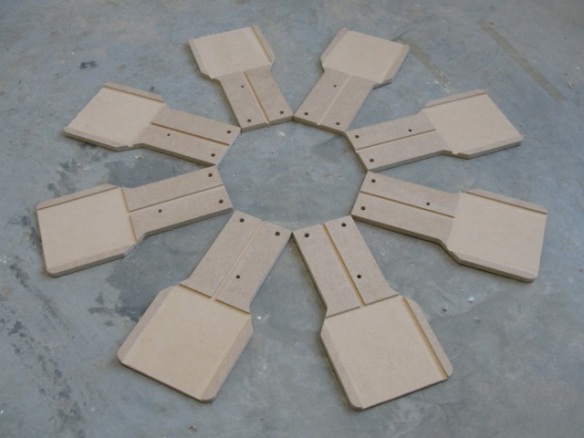
then assembled and sprayed a deep matt grey
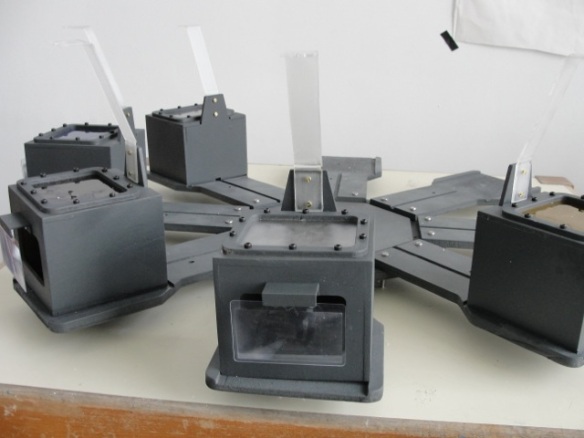
To make the PDMS growing devices a positive was made using the CnC router on a block of wood. From this positive a silicon mold was made.
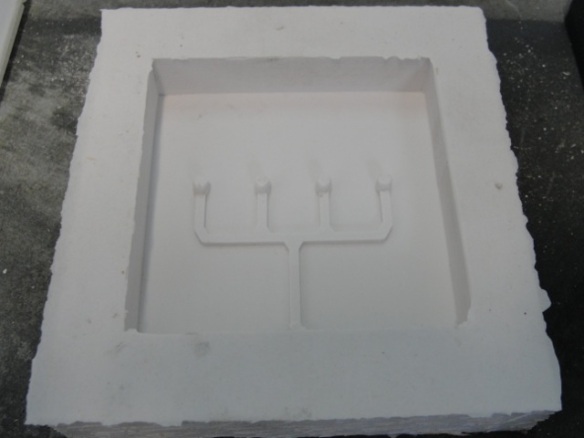
It looked great, but for some reason I’ve yet to discover the PDMS would never set. 4 months later it is still tacky!
So eventually I resorted to the tried and tested petri dish casting vessel. I made a positive of the 4 pronged fork shape and stuck it to the bottom of a petri and cast it 8 times. it didn’t come out so beautifully but at least it worked. I then cast 8 2mm thick sheets to blank of the bases and seal the microfluidic system.
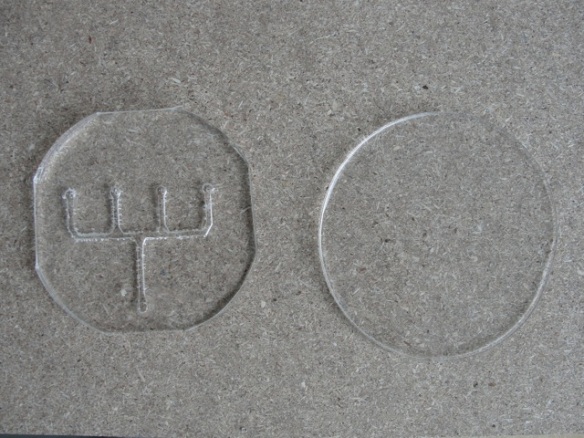
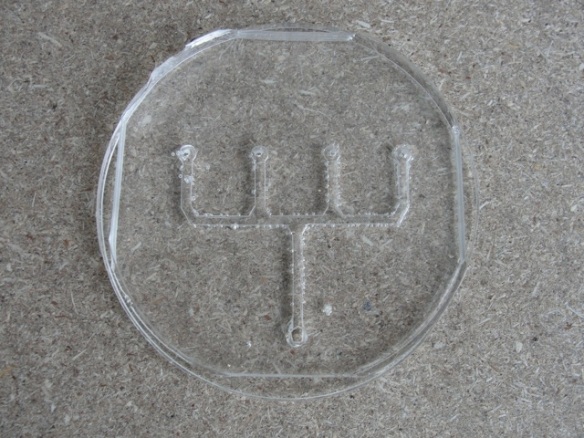
Cut off pipette tips were set into the PDMS wells, placed within a retaining ‘ring’ and connected to a tube from the nutrient reservoir.

Lighting gel filters which accurately match the known light conditions on Earth, the Moon, Mars, Venus and Titan, as well as how they had been envisaged in popular science fiction art, were placed into the holders on the top of each growing box, and a full spectrum (5,500K) LED bulb suspended above.
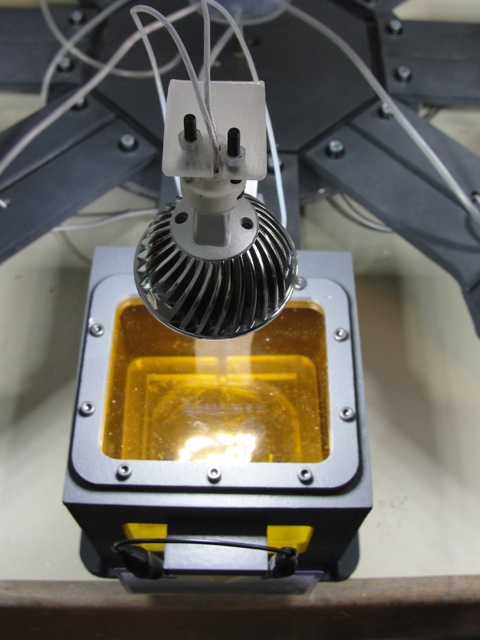
The bulbs were connected 4 each to two 12V LED bulb ballasts.
A business card sized magnifying sheet was place in the front of each growing window and the nutrient reservoir to aid viewing the tiny seedlings as they grew.
Finished studio view
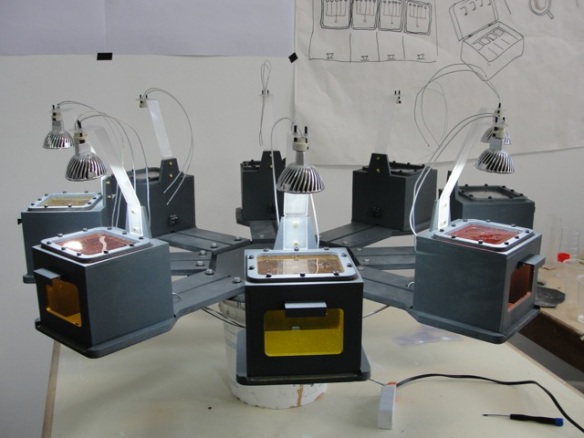
Finished exhibition view

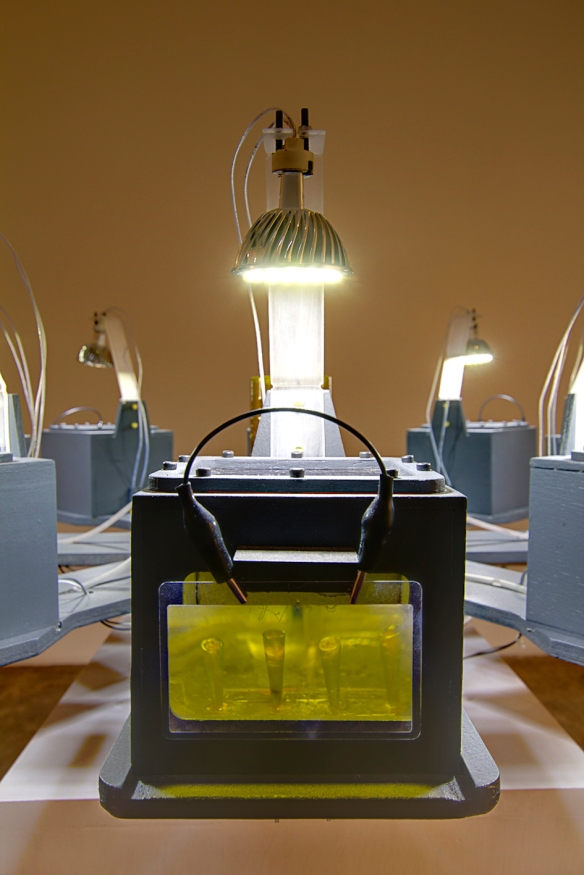
43.546703
-5.662886






